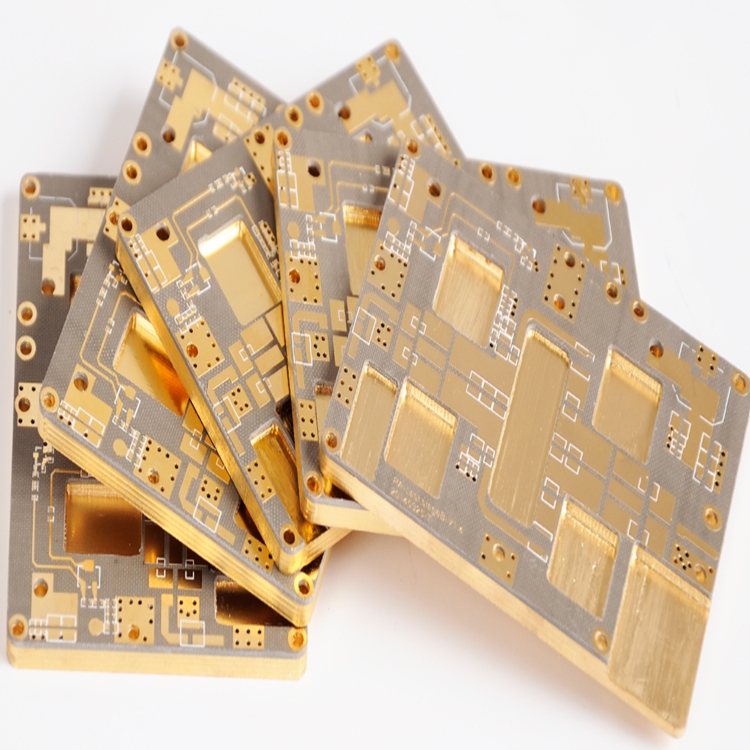Welding heavy copper pcb
There are many copper welding methods, and there are differences in welding methods for different copper products. Commonly used methods include :
Gas welding
Manual carbon arc welding
Manual arc welding
Automatic welding can also be used for large structures. Now we use red copper and brass as examples to briefly explain the differences between the above 3 welding methods, hoping to help you deepen your understanding of related copper technology.
(1) Gas welding
Gas welding of red copper.
The most commonly used butt joint for welding red copper (known as industrial pure copper). Gas welding can use welding wire, one is welding wire containing deoxidizing elements, such as wire 201, 202; the other is general red copper wire and cut strip of base material, using gas agent 301 as flux.
Gas welding of brass.
Due to the low temperature of the gas welding flame, the evaporation of zinc in brass during welding is less than that of electric welding, so in brass welding, gas welding is the most commonly used method.
The welding wires used in brass gas welding are: wire 221, wire 222, and wire 224 etc. These welding wires contain elements such as silicon, tin, iron, etc., which can prevent and reduce the evaporation and burning of zinc in the molten pool, and help ensure the welding seam. Performance and prevention of pores. There are two types of flux commonly used in gas welding brass, solid powder and gas flux. The gas flux is composed of methyl borate and methanol; flux such as gas flux 301.
(2) Carbon arc welding
Carbon arc welding of red copper Carbon arc welding uses carbon electrodes and graphite electrodes. The welding wire used for carbon arc welding of red copper is the same as that of gas welding, and the base material can also be cut, and the flux for gas welding of red copper, such as gas flux 301, etc. can also be used.
Carbon arc welding of brass, welding wires such as wire 221, wire 222, and wire 224 are selected according to the composition of the base material, or self-made brass welding wire can be used for welding. For welding, gaseous agent 301 or the like can be used as a flux. Welding should be performed in a short arc, so that evaporation and burning of zinc can be reduced.

(3) Manual arc welding
The manual arc welding of red copper uses red copper electrode copper 107, and the welding core is red copper (T2, T3). The power supply should be reversed with DC. When welding, a short arc should be used, and the electrode should not swing laterally. The reciprocating linear motion of the welding rod can improve the formation of the weld.
For long welds, the gradual dewelding method should be used. The welding speed should be as fast as possible.
When multi-layer welding, the slag between the layers must be completely removed. Welding should be carried out in a well-ventilated place to prevent copper poisoning. After welding, use a flat-head hammer to strike the weld to eliminate stress and improve the quality of the weld.
When the thickness of the weldment is greater than 4 mm, it must be preheated before welding. The preheating temperature is generally about 400~500℃.
Manual arc welding of brass In addition to copper 227 and copper 237, you can also use homemade electrodes for welding brass. The positive connection of the DC power supply is adopted, and the electrode is connected to the negative electrode. The surface of the weldment should be carefully cleaned before welding. The groove angle should generally not be less than 60~70o, because to improve the weld formation, the weldment should be preheated 150~250℃.
Heavy Copper PCB’s Capabilities
Based on the requirement, heavy copper PCBs can be expensive to produce.
Thus, it is more complex in design but more effective in producing heavy copper PCB.
It should have the following capabilities:
About Andwin Circuits
Andwin Circuits as a industry leading of PCB manufacturer since 2003.
Specializing in multilayer PCB, Hevay Copper PCB, Rigid flex PCB, HDI PCB, controlled impedance PCB and Radio Frequency circuit, from quick turn prototype to mass products.

